Understanding Wireless Charging
An idea from the distant past has finally realized itself in the form of a "futuristic" technology. The concept of wireless charging has existed for 180 years but technology to implement it was way behind until now. Wireless charging is here and Qi (pronounced "Chee") is leading the charge to globalize this convenience. Established in 2008, The Wireless Power Consortium developed Qi with aspirations to do what the Wi-Fi Alliance did for wireless networking. Using theories and developments invented in the early 1800s they can offer all of us a piece of the future. In 1826, a French physicist developed Ampere's Circuital Law showing that electric current produces a magnetic field. 10 years later the first induction coil was invented and in 1893, Nikola Tesla successfully demonstrated a phosphorescent lamp illuminating wirelessly. These early inventions paved the way for wireless charging for our devices today.
The Qi
The development of Qi is important to all of us seeking to add wireless charging to our lives. The word Qi is Chinese for "vital energy" and the WPC (Wireless Power Consortium) is poised to do what no one has been able to do: create one global standard that guarantees users that their device will be able to charge wirelessly regardless of make, model or country's power plug. Simply dropping your device onto a Qi pad will result in a recharge to your draining battery. The Qi logo is a promise that interoperability of wireless charging is a reality that we can all enjoy. The infrastructure is being built and deployed right now. Already you can find Qi charging stations popping up in hotels, airports, coffee shops, and board rooms to offer an easy way to juice up.
Technology
So, how exactly does "wireless charging" work? The technology is known as inductive charging or electromagnetic induction. There are two coils at work when trying to get an inductive charge to function. The coil sending the power, also known as the primary, is in the base station which is usually flat, and the receiving coil, also known as the secondary, is in the device being charged; its job is to accept the power transfer from the primary. Current flows through the primary creating a magnetic flux, and the alternating current travels to the secondary completing the circuit and supplying up to 5 watts of power.
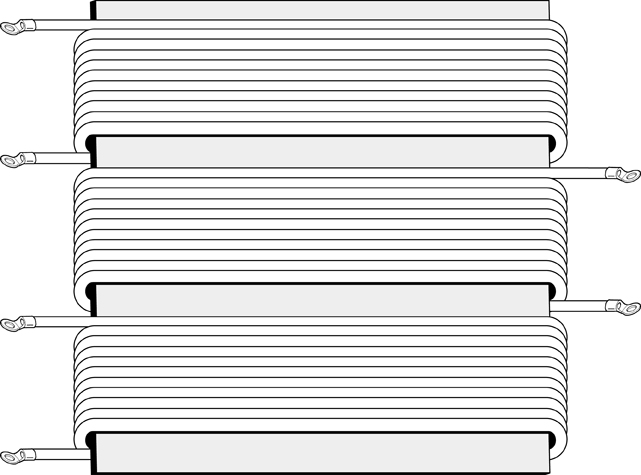
In order for the power to transfer between the primary and secondary, the coils need to be in close proximity and properly aligned. In one implementation of Free Positioning using an adjacent pair (AP) configuration, the coils in the primary operate in tandem. The coils are coaxial wound around a ferrite tile and placed with inverted flow from one coil to the next. The coils in the primary have current that flows in opposite direction resulting in a flux region between them that creates a link to the secondary. A diamagnetic layer beneath the cluster of the primary reduces the flux path below. The outer two coils driven out of phase create a high flux between the secondary coil resulting in a coupling between the primary and secondary and the transfer of power begins.
With the idea of wirelessly sending power from one unit to another, it's only natural to ask, "Is it as efficient as a cable?" The answer is yes and no. Here is why. Understand that there are two power consumption states. There is the standby power state and the charging consumption state. Almost all of us leave our power adapters plugged into the wall. While the adapter is not in use and it is not charging, it is still using power. This draw on the wired adapter while loaded (charging a device) and unloaded (not charging) is about the same. This means the power is being used whether or not it is actually charging a device. Qi wireless charging pads have a significant decrease in power when in standby. How low? Try 0.0001 watt when not charging (in idle mode). That figure is likely to drop even further in the future. Standby power is the power state that our chargers find themselves in most of the time as we usually have our devices on us and not hooked up to the charger, so the power savings can be quite significant. Although the low standby power is terrific it is only one of the states that make up a charger; there is still the loaded time when they are doing their jobs and resupplying that juice to a battery, allowing us to be mobile. It's at these times that the Qi charger cannot quite do what a copper cable directly connected can do. After all what is more efficient than a direct connection to its source? However, these numbers are still not as clear as they should be. Wireless charging can transfer about 70% of the energy to your device (more if better components and shielding are used). The charge times are unaffected and our tests show that from full discharge to full recharge the times were nearly identical. The discrepancy comes into play if you are replacing more than one wall charger. Although you only get 70% of the energy, like we discussed earlier the standby power is about the same on traditional chargers and therefore the numbers start to even out when you replace your chargers with Qi pads. How many? Just two will balance out the traditional to the wireless. The numbers only get better as more Qi pads replace your traditional chargers.
What can one charge? Currently the output for the Qi system is 5 watts, which is enough for cell phones, MP3 players, game controllers, Bluetooth headsets/speakers and smaller devices. While I was at CES this year in January, I did see tablets charging on the new revision of 15w, which will be out sometime this year. We have also been able to trickle-charge a 7-inch tablet here (although it took awhile). Laptop computer charging is not yet supported with the new revision due out, but with plans growing at the rate they are it's not a far stretch to see a toaster on your countertop drawing power wirelessly. Your entire countertop could literally become a wireless charge pad where you can just drop your small appliances on and connect to the power grid. With induction-based cooking, it's not impossible to think that you can have your countertop double as a stove with no separate cook top appliance needed. The University of Tennessee has a program right now that uses inductive charging to power and move buses. This system is better than an electric bus that needs to store many batteries and can recharge only once connected to a power outlet. UT's idea is to have the pads be in the streets constantly fueling batteries offering extended range and saving weight over current electric versions.
What is happening now
| The exciting thing about all of this news is that it is happening right now. Before the end of this month alone, there will be over 10,000 public Qi chargers installed. Nokia has teamed up with Virgin Atlantic, Tea Leaf and Coffee Bean to have Qi chargers placed in their furniture to offer anyone with a Qi enabled device to power up while out and about with zero wires, zero connections. Tullys Coffee and McDonalds are also venturing into the Qi universe and offering Qi stations in their restaurants. Automobile giant Toyota is adding the world's first Qi wireless In-Car charging station, which will debut on the 2013 Toyota Avalon Limited. Another world first is Panasonic; they are offering a Qi wireless battery included in their camcorder, for wirelessly charging the camcorder, which is due out in late May. |
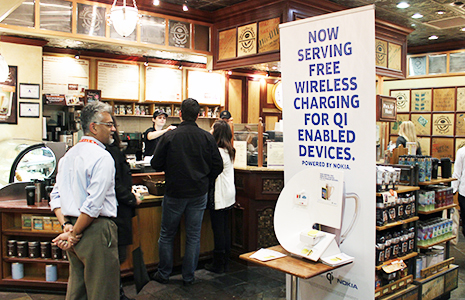
|
Products to charge your phone are also hitting the market in big ways. There are already dozens of manufacturers developing very creative and useful ways to include a Qi wireless charging pad into products that you will want to use. JBL has a swiss army knife of a speaker. You can transfer music by the traditional 3.5mm headphone hookup, the tried and true Bluetooth connection, or the newer NFC (Near Field Communication) route.
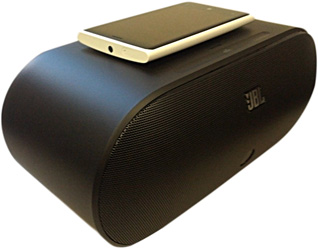 |
 |
And sitting atop is the built in Qi wireless charging pad so that you don't have to connect a cable any longer to keep your phone charged. Just drop your Qi enabled device on top and you will not have to worry about the battery dying during your favorite beats. Another rendition with Qi built in is the Fatboy charging pillow to recharge that hard working cell phone in style and comfort.
The device list grows every month, with many notable devices making their grand entrances over the past few months. Devices such as the HTC 8x (Verizon model) and Droid DNA phones, the newest Google edition of their flagship marquee the Nexus 4, the LG Spectrum and of course the "rise from the ashes" company Nokia with the launch of their crowned jewels, the Lumia 920 and 820, are all sporting Qi wireless charging functionality. The manufacturers of these innovative devices chose to include the Qi wireless feature out of the box; as a result, many devices need no add-ons to take advantage of the free charge stations coming online. Just find yourself a Qi charge pad and drop your phone down.
| Even devices that don't natively support Qi have add-on units that integrate seamlessly into the device to provide the necessary functionality. Noteable products such as the Samsung Galaxy S3 and the Samsung Note 2 both have made it very easy to add Qi to their handsets. It requires either a replacement back cover or an internal card to be used and that's it. You can now enjoy the same benefits of using wireless charging. |

|
This section would not be complete without a run through the adapters that make ANY phone capable of using Qi. There is an ever-growing market of cases and adapters that allow you to plug-in practically any phone and drop it down on a wireless charging pad to juice up. There are cases for the iPhone. Adapters for Micro USB and Mini 5 pin USB that plug in and use a small suction cup to stay in place until you remove them. Another market that is seeing a Qi presence is game controllers. Simply replace your battery on your Wii or Xbox 360 controllers and drop them on the pad after use and they will recharge to full. There is no more plugging in a cable or removing the battery to place into a charger.
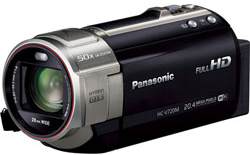 |
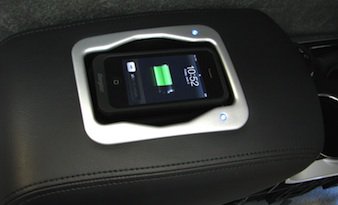 |
The key theme for Qi is convenience. In addition, there are plenty of ideas out there to make it easier to grab a charge for your device that combine with products you already use. Such products as an alarm clock with a built in Qi charger behind or on top of it, or a lamp like this Konica Minolta Symfos Tasklight. As the integration of Qi into everyday products is becoming more developed and deployed and more businesses begin taking hold of the Qi standard, adoption in the mainstream everyday life is right on our doorsteps and all you need to do to take part is cut the cord.
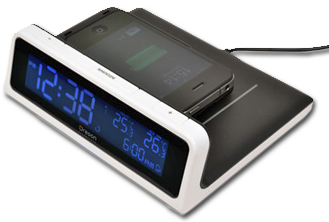 |
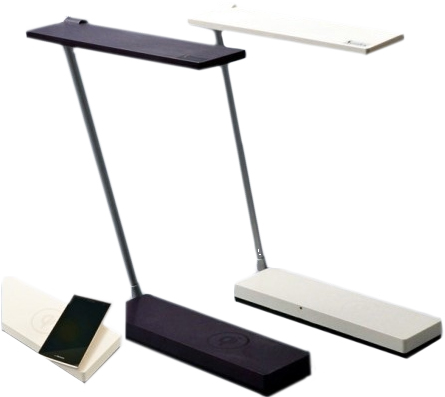 |
Products featured in this article:
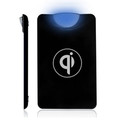
Qi Tabletop Wireless Charging Pad, Black |
 90W3-01200
90W3-01200
Qi Embedded Wireless Charging Module with AC Adapter, White |
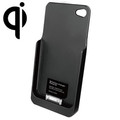 90W3-02100
90W3-02100Qi Wireless Charging Sleeve for iPhone 4 / 4S, Black |
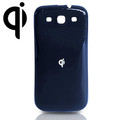 90W3-03200
90W3-03200
Qi Wireless Charging Back Cover for Samsung Galaxy S3, Blue |



